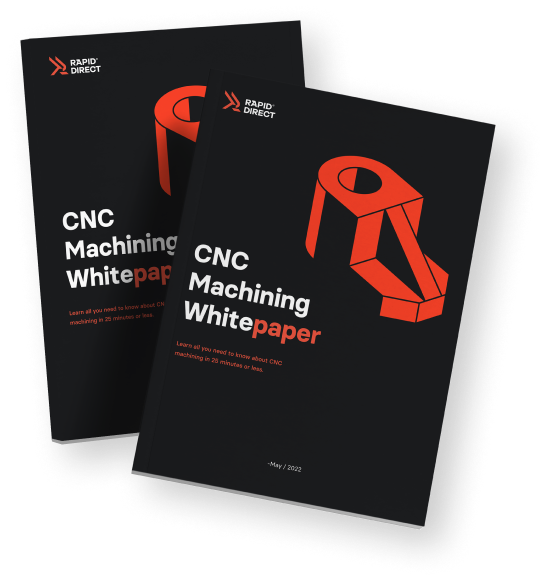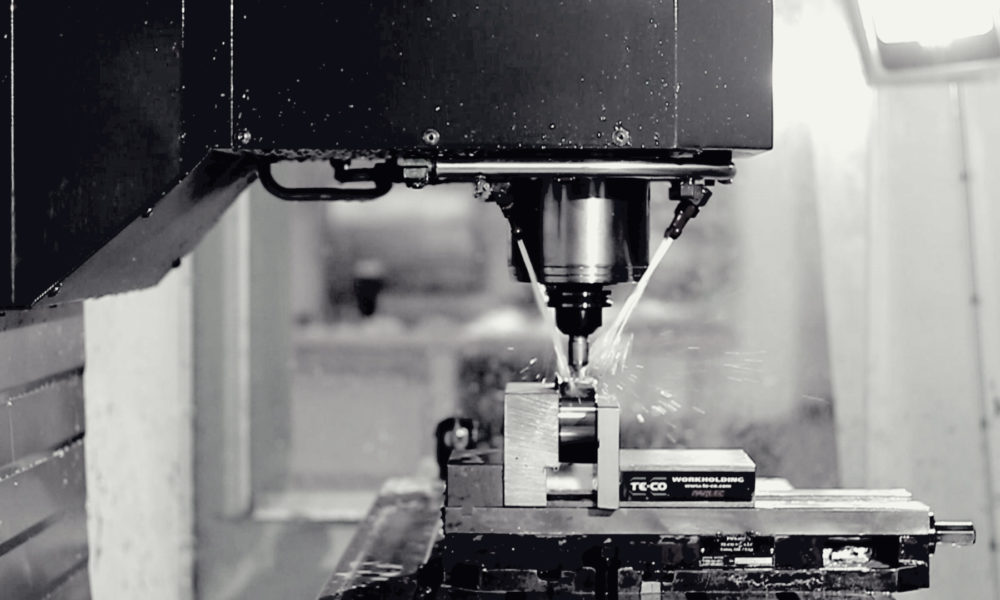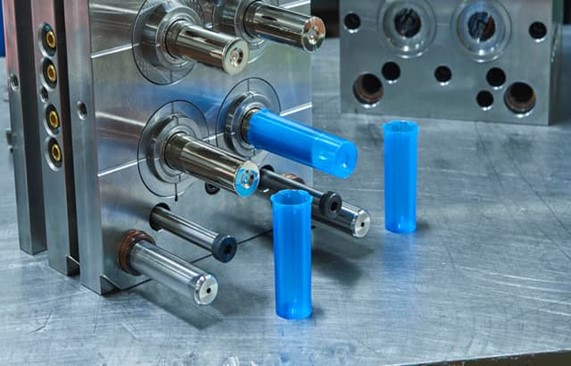The surface finish is an integral part of the CNC machining process because a lot of applications require both aesthetic and functional design. Modern industrial designers have all the right tools and checks to ensure that their designs are functional. So, CNC machining surface finishes are an area where they can cause their product to stand out from the crowd.
The following will discuss the basics of CNC machining surface finishes and shed some light on the considerations for selecting the standard surface finish for any project as well as
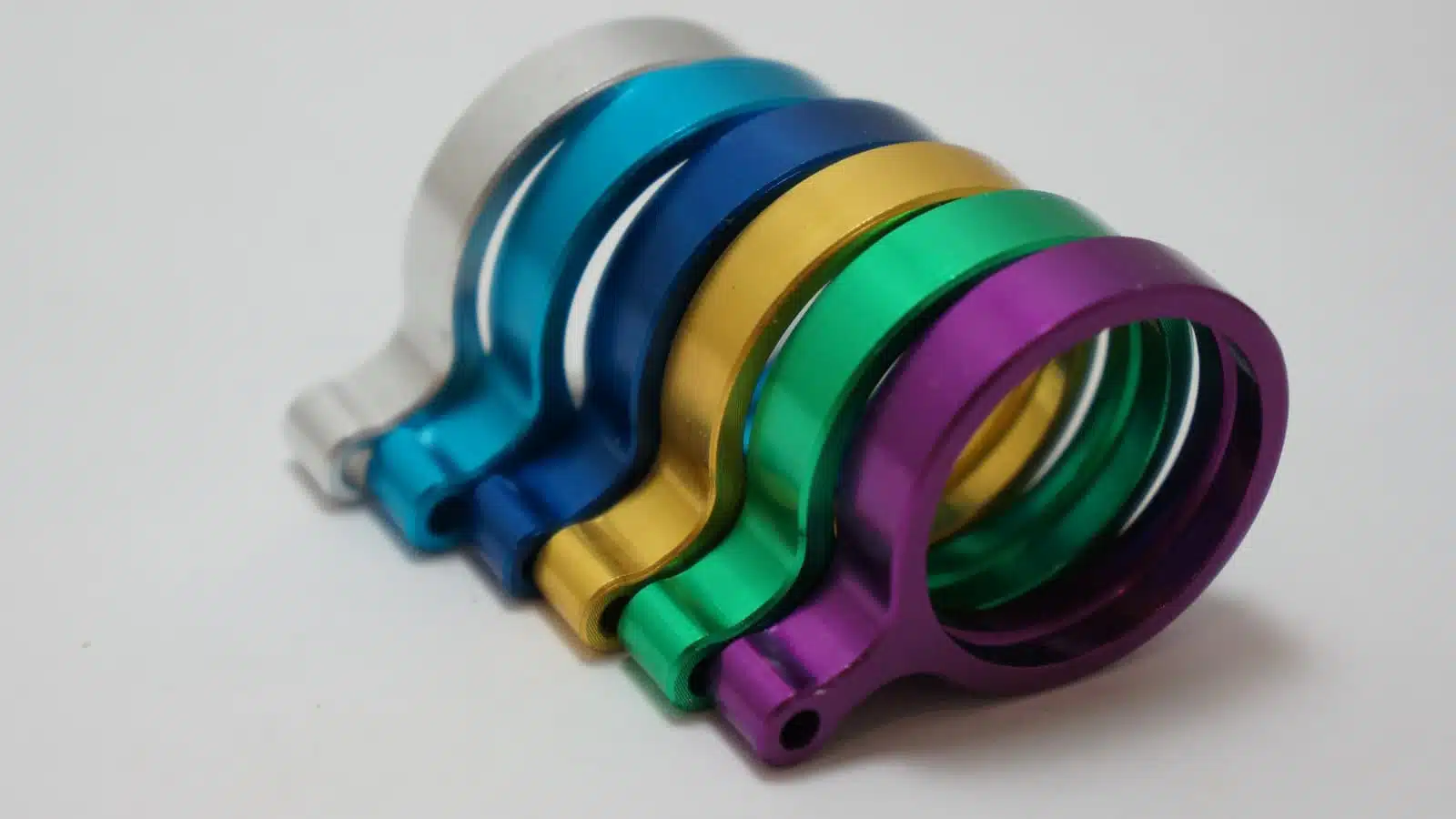
What’s Surface Roughness for CNC Machining?
When discussing CNC (Computer Numerical Control) machining, surface roughness describes the quality of a planned surface. In other words, it concerns the surface topography’s micro-level changes and texture of CNC machined parts.
Surface roughness is a major determinant of a product’s functionality and appearance. It influences things like general look, wear resistance, corrosion resistance, and friction. For this reason, it is crucial to achieve the appropriate surface roughness while CNC machining.
The conventional method for determining the roughness on the finished product’s surface is to take the average deviation of the surface from its ideal shape. Specialized tools like surface roughness testers and profilometers are frequently used for the measurement. Typically, the outcome is given as a length measurement in micrometers (μm) or roughness average (Ra).
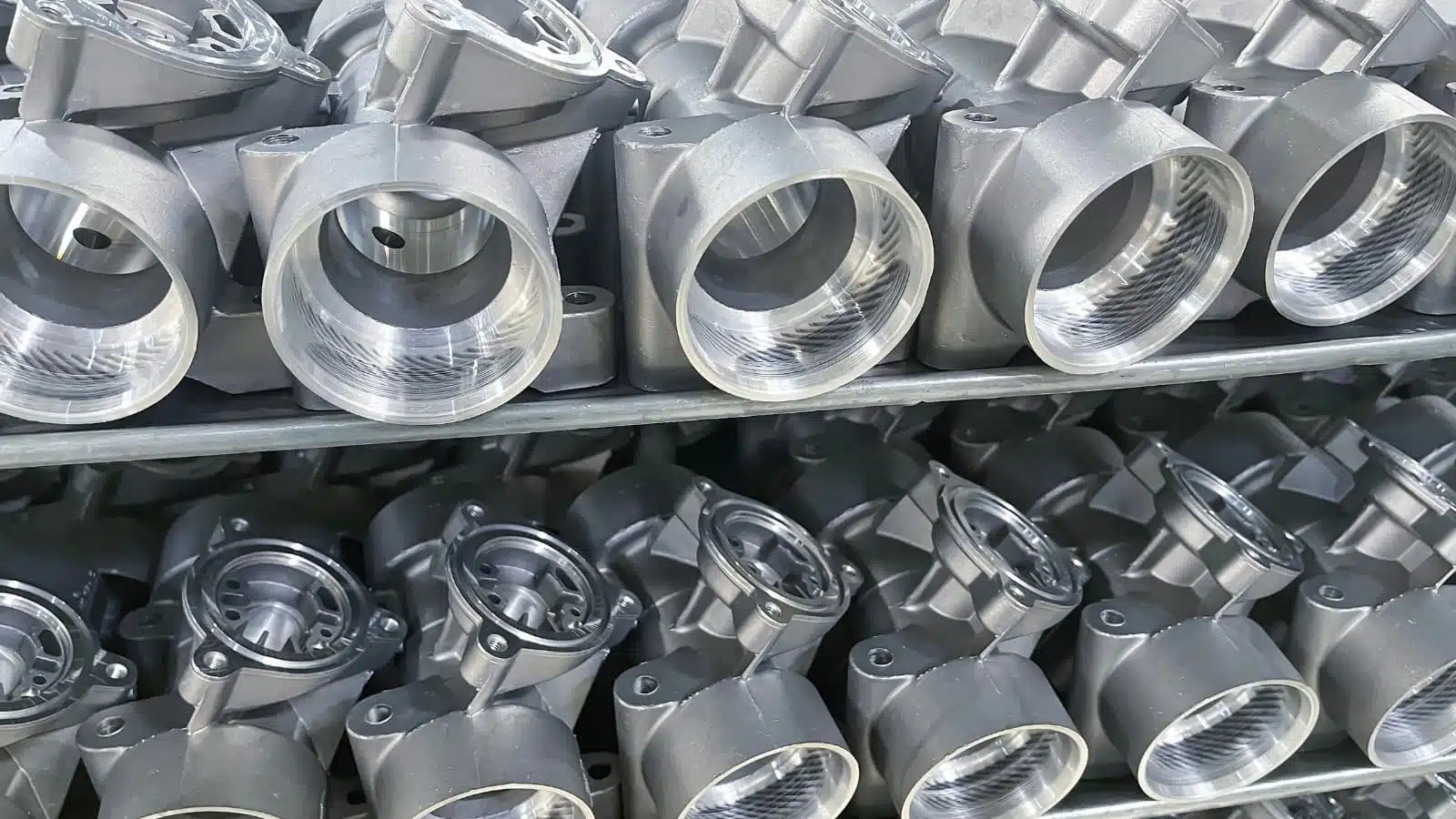
Numerous elements must be put into consideration to regulate surface roughness in CNC machining. These consist of the material qualities, the machining technique used, the cutting parameters (such as cutting speed, feed rate, and depth of cut), and the tool selection. Machinists can tailor the surface roughness to match the unique needs of the item or product being created by modifying these factors.
To put it briefly, ra surface roughness symbol in CNC machining describes the small changes and texture of a machined surface. It is an important component that influences how the final product works and looks. Through the manipulation of cutting parameters, tool selection, and machining processes, machinists endeavor to attain the intended surface roughness.
As Machined Finish
As machined finishing is one of the surface finishing options available and refers to the surface finish that doesn’t need any process after dismounting from the machine. The main characteristics of as-machined surface texture of a part are the visible tool marks and a rough texture due to CNC’s subtractive nature. The primary factor determining finishing quality is surface roughness (Ra), which is the average deviation of the machined profile from the ideal surface.
In general, the industry relies on specific Ra values to determine the surface finish requirements and quality of machined finishes. These values may vary depending on the specific application but typically fall within a certain range. It is important to note that Ra is not the only factor to consider when evaluating the quality of a machined finish, as factors such as surface integrity, waviness, and flatness can also affect the overall quality of the surface finish. The industry relies on the following Ra values:
3.2 μm Ra
This is the typical machine finish, which is notably smooth and appropriate for the majority of consumer parts, but this surface roughness leaves noticeable cut marks. Except in cases where anything different is stated, 3.2 μm Ra is the standard surface roughness.
Parts subjected to loads, vibrations, and stress should have a maximum surface roughness of 3.2 μm Ra.
1.6μm Ra
CNC machining typically leaves very faint cut marks. This Ra value is best for tight fittings and strained parts and is suitable for slowly moving and mildly load-bearing surfaces. It is not advisable to use this surface roughness on parts that spin or vibrate quickly. This type of surface roughness is produced by machinists under controlled conditions, such as high speeds, fine feeds, and light cuts.
0.8μm Ra
Due to its high quality and severe control requirements, this surface finish is costly to produce. It is best to use it with components that are subjectable to concentrated stress, which is optimal. It is also suitable for bearings in situations with intermittent motion and light loads.
0.4μm Ra
This is the lowest and best available grade of surface roughness. Particularly strained or stressed areas function well with it. Fast rotating parts like bearings and shafts are examples of parts that require this surface finish. Only in circumstances where smoothness is the most crucial factor should one demand this surface finish, as it requires the most work to produce.
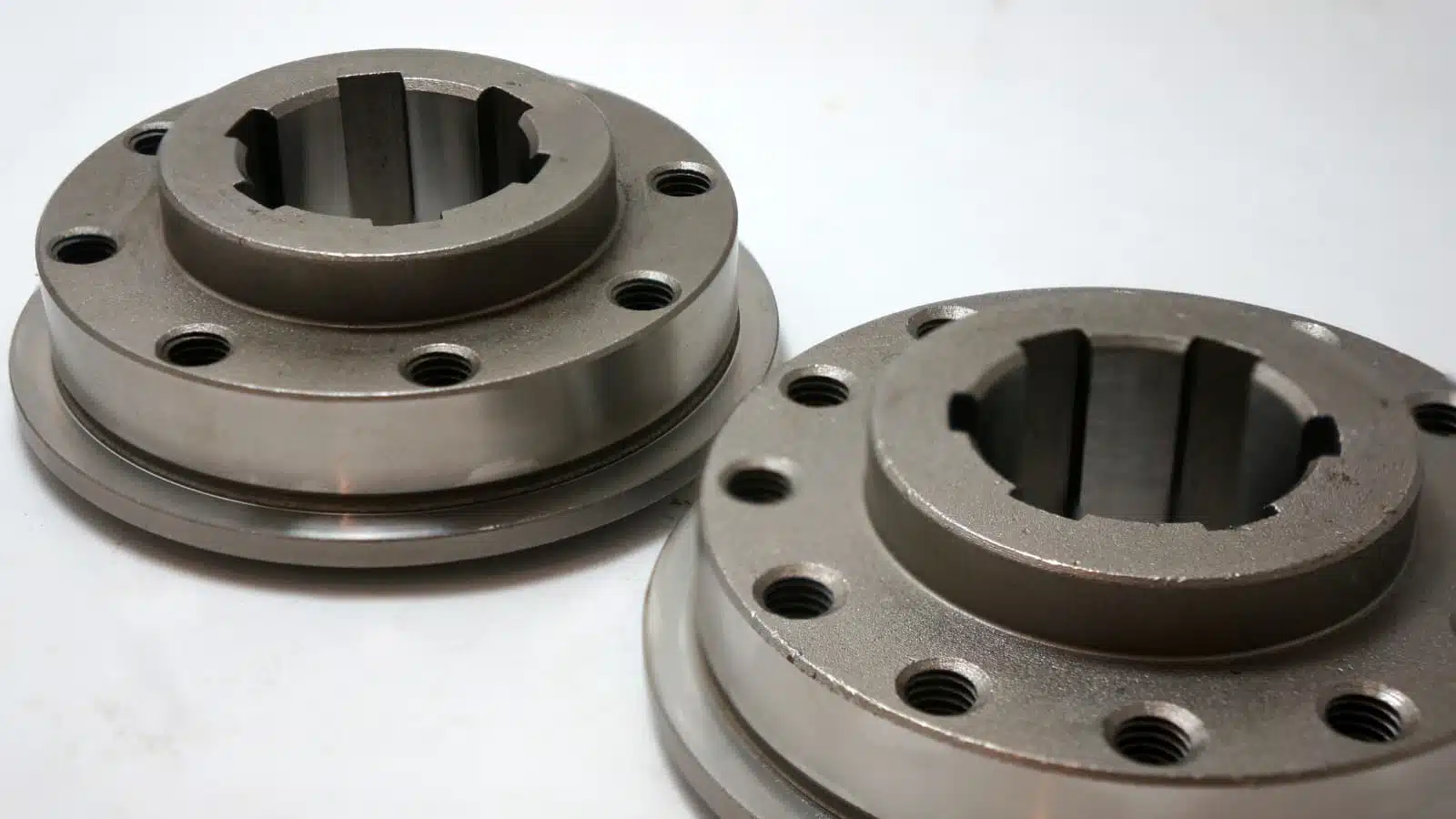
One of the main advantages of opting for machined finishing is the dimensional tolerances. The smaller the surface roughness is, the higher the dimensional tolerance would be for that part. Moreover, the machined finish doesn’t incur any additional costs, which is ideal for projects on a tighter budget.
However, as-machined finishes leave visible tool marks or a rougher finish on the workpiece, which is not ideal for high-value projects where aesthetics play an important role as well.
Common Types of CNC Machining Surface Finishes
There are a number of CNC machining surface finishing options. These common finishes often play a major role in determining the final appearance of a machined part. Smooth, brushed, matte, and textured surface finishes are a few of the popular varieties of finishes. Each one of these types has distinct qualities of its own. Consequently, the particular needs or specifications of the product determine which finish is ideal. Below is a metal surface finish chart that includes finishing options for parts and their descriptions;
| Surface Finish Options | Description (Applicable materials and benefits) |
| Anodizing | Anodizing is a surface treatment frequently applied to aluminum. This surface finish forms an oxide layer on the surface of the metal. This oxide layer improves the durability and corrosion resistance of the finished CNC machined parts. Additionally, anodizing improves the material’s visual attractiveness and gives alternatives for coloring. |
| Alodine Coating | Applied to metals such as aluminum, alodine coating—also called chromate conversion coating—is quite common. It works well as a primer for paint or powder coatings and has a corrosion-resistant finish. It produces a thin layer of protection which strengthens the link between succeeding coatings. |
| Black Oxide Coating | Black oxide coating is a frequent surface finish for steel and iron. It has a wear-resistant finish that offers a dark, appealing surface. The lubricity and durability of the treated surface can be improved with black oxide coating. |
| Electroplating | The process of electroplating entails covering a substrate with a layer of metal. Applying this finish offers increased resistance to corrosion, enhances appearance, and adds a layer of wear protection. |
| Passivation | Stainless steel is frequently passivated to improve its resistance to corrosion by eliminating iron impurities and creating a coating of protective oxide. It enhances stainless steel’s resilience and performance under challenging conditions. |
| Bead Blasting | To provide a textured and consistent rough machined surface finish, bead blasting uses high pressure to drive tiny beads into a surface. This surface treatment facilitates the cleaning of surfaces and removes burrs while preparing it for secondary finishing. |
| Powder Coating | This is a dry finishing technique that involves the electrostatic application of fine powder onto the surface of parts. After the application, curing occurs to ensure treatment is permanent. With outstanding resistance to impact, solvents, and UV radiation, powder coating offers a long-lasting and superior finish. Metals, polymers, and wood are just a few of the things that one can coat with powder. |
| Brushing | The process of brushing involves using abrasive pads or brushes to apply a finish to a material’s surface. It is suitable for metal surfaces to improve their visual attractiveness. This finish works particularly stainless steel, by leaving a linear or circular pattern on the surface. |
| Polishing | To achieve a glossy and smother finish. Polishing entails the use of abrasives like buffing wheels or polishing chemicals. It increases the reflectivity and aesthetic appeal of materials like metal, giving them a mirror finish. |
| Painting | Paint is a surface treatment that works well on a variety of materials. It can give both visual appeal and corrosion protection, and it comes in a variety of color possibilities. painting are best for metals, polymers, wood, and other things. |
Anodizing
Anodizing is a chemical process that immerses a part in an electrolyte solution and forms a protective oxide layer on the surface. The anodizing process has two types, type II and type III, where the former is a decorative layer and the latter is a hard coat suitable for high-performance applications. Both type II and type III anodizing use a sulfuric acid bath and electrolysis to create a uniform oxide layer on the surface.
- For type II, the layer remains relatively thin (up to 25 microns) and remains flexible enough for different applications. However, a thinner oxide layer means that the material remains susceptible to abrasions and corrosion after a certain degree of exposure.
- For type III, the anodizing process remains the same except for the requirement of a higher voltage current. The type III process also controls the temperature and maintains it at a lower temperature. This results in a thicker oxide layer (25 to 150 microns) that provides better corrosion and abrasion resistance to the material.
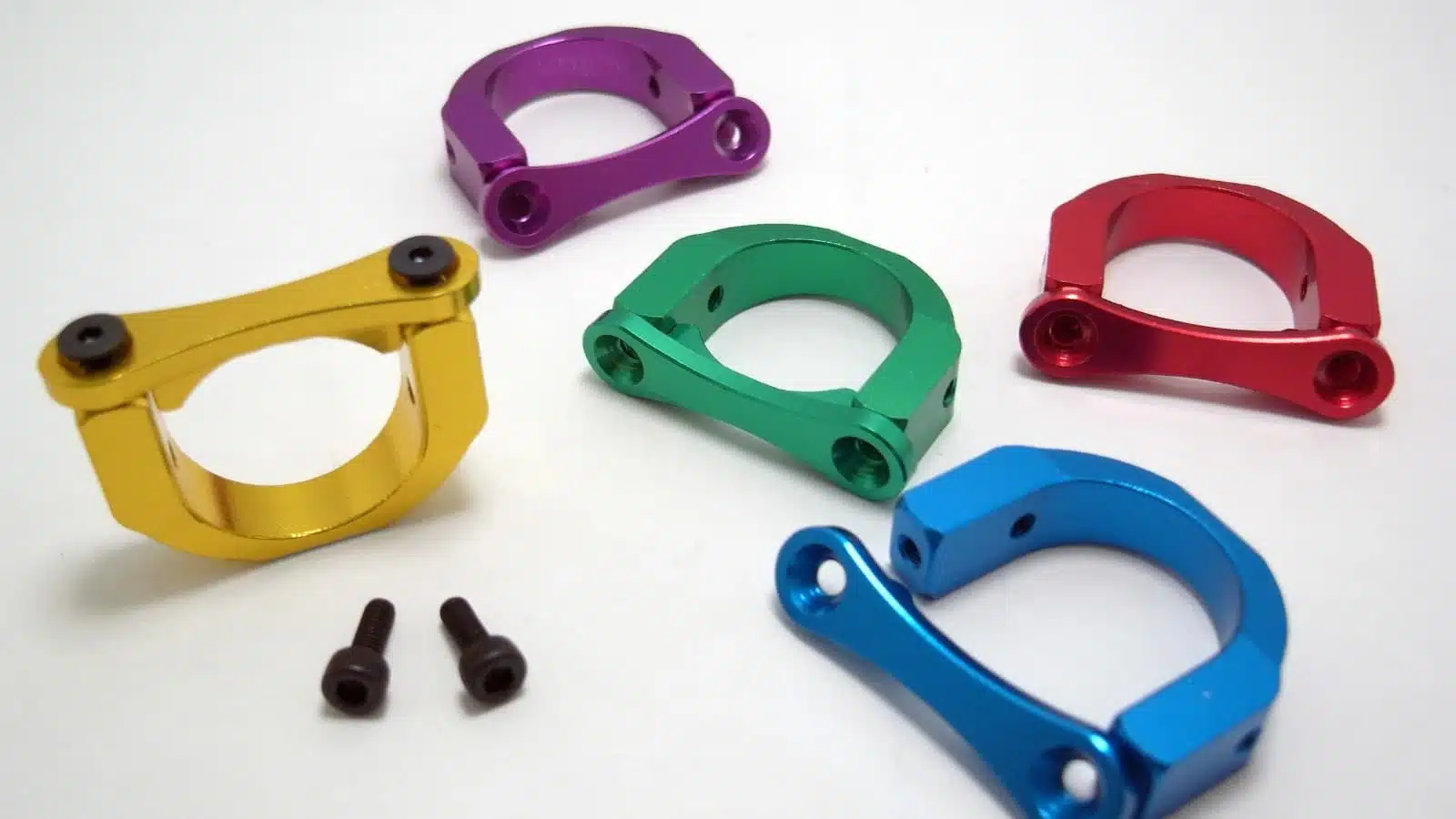
Despite better corrosion and abrasion resistance, type III anodizing is not suitable for some applications. The thicker oxide layer can make the workpiece brittle, which may cause cracks or chips under severe stress. That’s why it’s integral to consider the application before selecting between type II and III anodizing.
After anodizing, the oxide layer protects any part’s surface from corrosion and other environmental contaminants. Whereas, the process also resists wear during use. In most cases, especially for aluminum parts, the anodizing layer is the only suitable finish for the surface. Moreover, there is a wide range of color options, like black, blue, pink, bronze, and more that enhance the overall aesthetic appeal of the part.
However, this machining surface finish is quite expensive and can increase the overall cost of the part. Besides, anodizing creates an additional layer on the part, which is not suitable for applications with high-precision requirements.
Alodine Coating
Alodine coating, or chromate conversion, is a common process on aluminum and other non-ferrous metals. The process applies a thin chromate coating on the part’s surface which enhances its corrosion resistance and adhesion. Generally, parts with Alodine coating will have another subsequent paint coat to ensure the longevity of the part.
There are, however, some major concerns regarding Alodine coating as well. Firstly, it’s environmentally hazardous and poses a significant safety risk for people working on it. Moreover, the process itself is also very complex and requires extreme precision, which can potentially increase the cost.
Black Oxide Coating
Black oxide coating generally works well with steel, copper, and other alloys that react well with oxygen. It creates a strong oxide layer throughout the part and protects it from different contaminants and physical damage. Apart from the corrosion and wear resistance, black oxide layers also have high lubricity, which is ideal for applications where friction plays a negative role.
Black oxide CNC finishing has a few disadvantages as well. The most important one is its susceptibility to abrasion, which makes it unsuitable for applications with high mechanical stress values. Furthermore, the corrosion resistance is also not that high, which means that the coating will fail in case of constant exposure to harsh conditions.
Overall, black oxide coating is a great CNC surface finish for regular applications. However, it’ll fail in any severe environment as a high degree of contaminants, temperature, and mechanical stresses can cause it to fail.
Electroplating
This is one of the most common finishing types for CNC machined parts because of its benefits and versatility. The electroplating finishing deposits a thin metallic layer on the workpiece and protects the inner part from all kinds of contaminants and corrosion.
In addition to its functional benefits, electroplating is also highly valuable for its ability to enhance the aesthetic appeal of surfaces. With options such as decorative and satin finishes, electroplating is one of the most attractive finishing options available in the industry. This makes it an ideal choice for applications where aesthetics are a major consideration. Whether you are looking to add visual appeal to a product or enhance the appearance of a component, electroplating can provide an excellent solution.
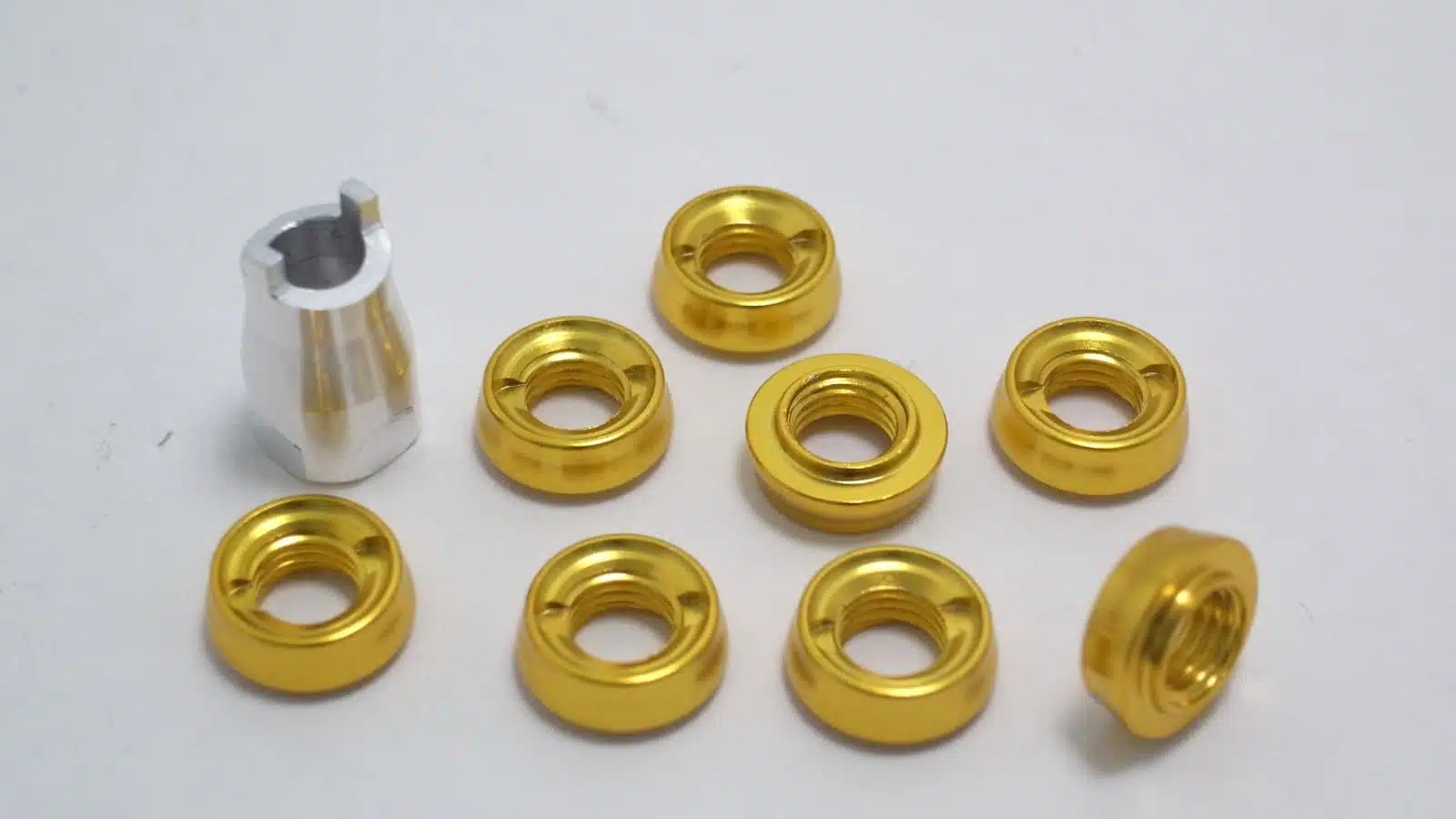
But electroplating finishing is a highly complex and precise process that requires significant technical expertise and experience for successful application. Additionally, it involves the use of numerous hazardous chemicals and consumes a significant amount of energy, which raises serious environmental concerns. Furthermore, electroplating can be applied to conductive materials, which limits its application in certain industries. As a result, alternative surface finishing techniques may require non-conductive materials.
Passivation
Passivation is a common post-processing technique used in CNC machining finish to improve the surface quality and performance of parts. After the machining process, the surface of the part may have micro-roughness or surface impurities that can negatively impact the part’s performance over time. Passivation can help to mitigate these issues.
In CNC machining finishes, passivation is suitable to apply to stainless steel parts. After machining the parts, they have a thorough cleaning to remove any residual oils, coolants, or metal debris. Then, the parts are immersed in a passivation solution, which can consist of nitric acid, citric acid, or a combination of both.
During passivation, the acidic solution chemically reacts with the surface of the part, removing any surface impurities and creating a uniform oxide layer. This oxide layer helps to protect the part from corrosion and other environmental factors. The passivation process typically takes several hours to complete, depending on the size and complexity of the part.
Bead Blasting
Bead blasting involves propelling spherical beads of glass or ceramic on the surface of the part. The process results in a textured, matte finish that can mask surface imperfections and create a uniform appearance. It also removes all kinds of contaminants because of the high-pressure air and maintains the overall cleanliness of the part. This process is important as contaminants can hinder subsequent processes like paint and electroplating.
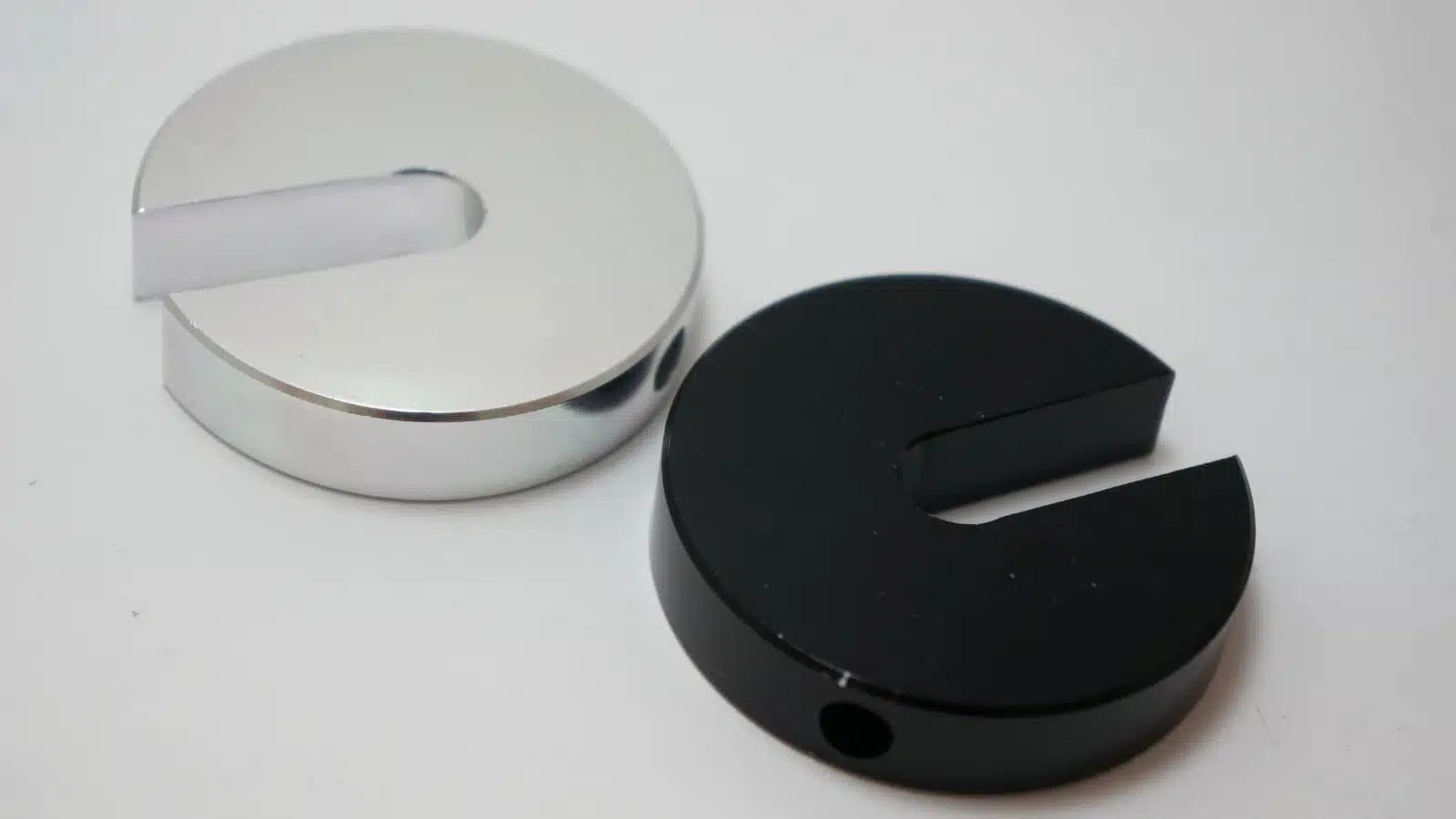
While safe, bead blasting can potentially cause a lot of surface damage to the part in case of a mistake. The process also affects the dimensional accuracy and functionality of the part and has high associated costs. Thereby making it a viable choice for luxury items or expensive parts only.
Powder Coating
Powder coating is perhaps the most common machining finish for metallic parts. One of the main reasons behind it is its durability and versatile performance. Powder coats resist scratches and chips, and don’t fade with time. Moreover, it comes with a wide variety of colors to give designers more freedom and offer better aesthetics. Finally, the process itself is extremely environment-friendly, which makes it an ideal choice for a lot of applications.
While powder coating offers many benefits, there are some potential disadvantages to consider. One of the main drawbacks is the high initial cost of equipment and materials, which makes it a more expensive option for smaller production runs or one-off parts. Additionally, the curing process requires high temperatures, which can limit the types of materials and applications.
Brushing
Brushing is more of a surface treatment method rather than a surface finish because it’s mostly used to prepare the workpiece for the next finishing process. The brushing finishing process is exactly as it sounds where a metal-wire brush or other abrasive pad cleans the surface and physically removes any contaminants or particles on the surface. One of its main advantages is its simplicity as the process doesn’t need any technical skill or machines to carry out.
However, brushing can potentially damage the surface finish of a machined part if one is not careful. Similarly, the process also can’t handle complex parts and is only done manually, which consumes a lot of time.
Polishing
Polishing is a simple process of making any surface smooth by using the concept of abrasion. Generally, the process starts with the coarsest abrasive and then advances until a smooth, aesthetically pleasing surface finish remains.
Moreover, polishing can also improve the durability of the material by reducing the risk of cracking or chipping. However, all that comes at a cost. Polishing is an extremely time-consuming process and can cost a lot too. Especially in the case of complex geometries, the requirements skyrocket because special skills and equipment are needed to polish unusual shapes to perfection.
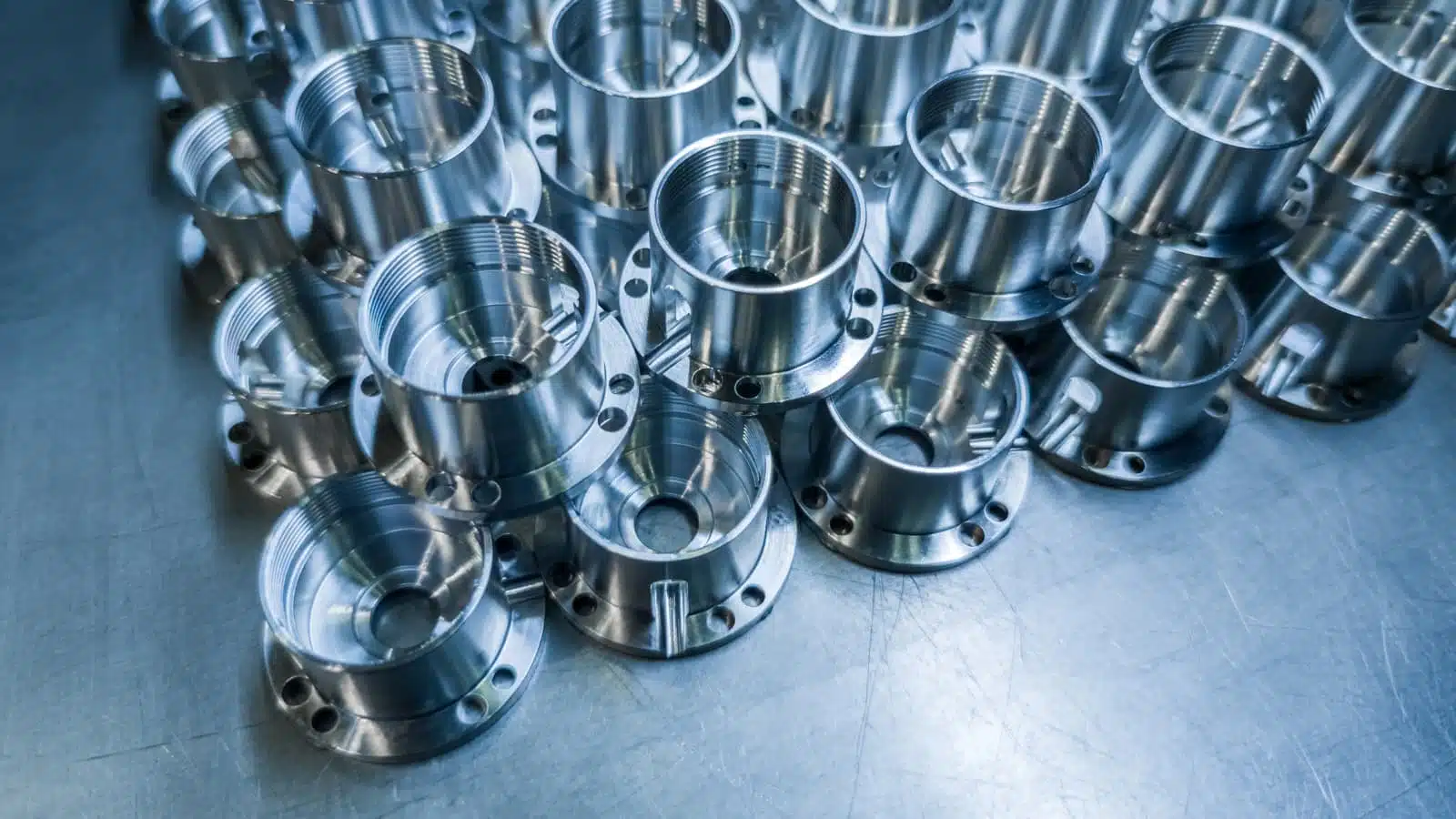
Painting
Metal paints are an effective CNC machining surface finish that protects against corrosion by covering the entire surface. They typically utilize lacquer and polyurethane to shield the surface from exposure to water and contaminants, resulting in long-lasting protection. However, when faced with harsher chemicals and abrasions, the paint can fail as it peels away, exposing the underlying surface.
Painting is a versatile process that offers a wide range of colors and finishes, making it an attractive option for many CNC machining applications. The process is also relatively straightforward. Nevertheless, it can be detrimental to the environment in certain cases and may require significant drying time for proper adhesion.
Pre-Surface Finish Processes for CNC Parts
Having discussed the surface finishing options available, let’s discuss the main pre-finish processes common in the industry. Here’s what they are.
1 – Degreasing
The machining process exposes the workpiece to multiple contaminants like oils, coolants, and other lubricants that reduce heat and friction. The degreasing process removes all those contaminants with different solvents or through ultrasound as well. In some simpler cases, even washing the part can be enough. However, the right process depends on the material properties and overall finishing requirements of the project.
2 – Deburring
This process removes all kinds of sharp edges and protrusions from the workpiece. It is quite important because burrs can negatively impact the performance of the part and can also be a safety hazard.
3 – Grinding
Grinding uses an abrasive wheel to clean the surface and remove any additional material from it. It is an integral process that creates an even and smoother finish, especially for materials that accumulate a lot of contaminants.
4 – Inspection
Once done, the last process is to inspect the part for any defects and rectify any issues if they exist.
Factors to Consider When Choosing a CNC Machining Surface Finish
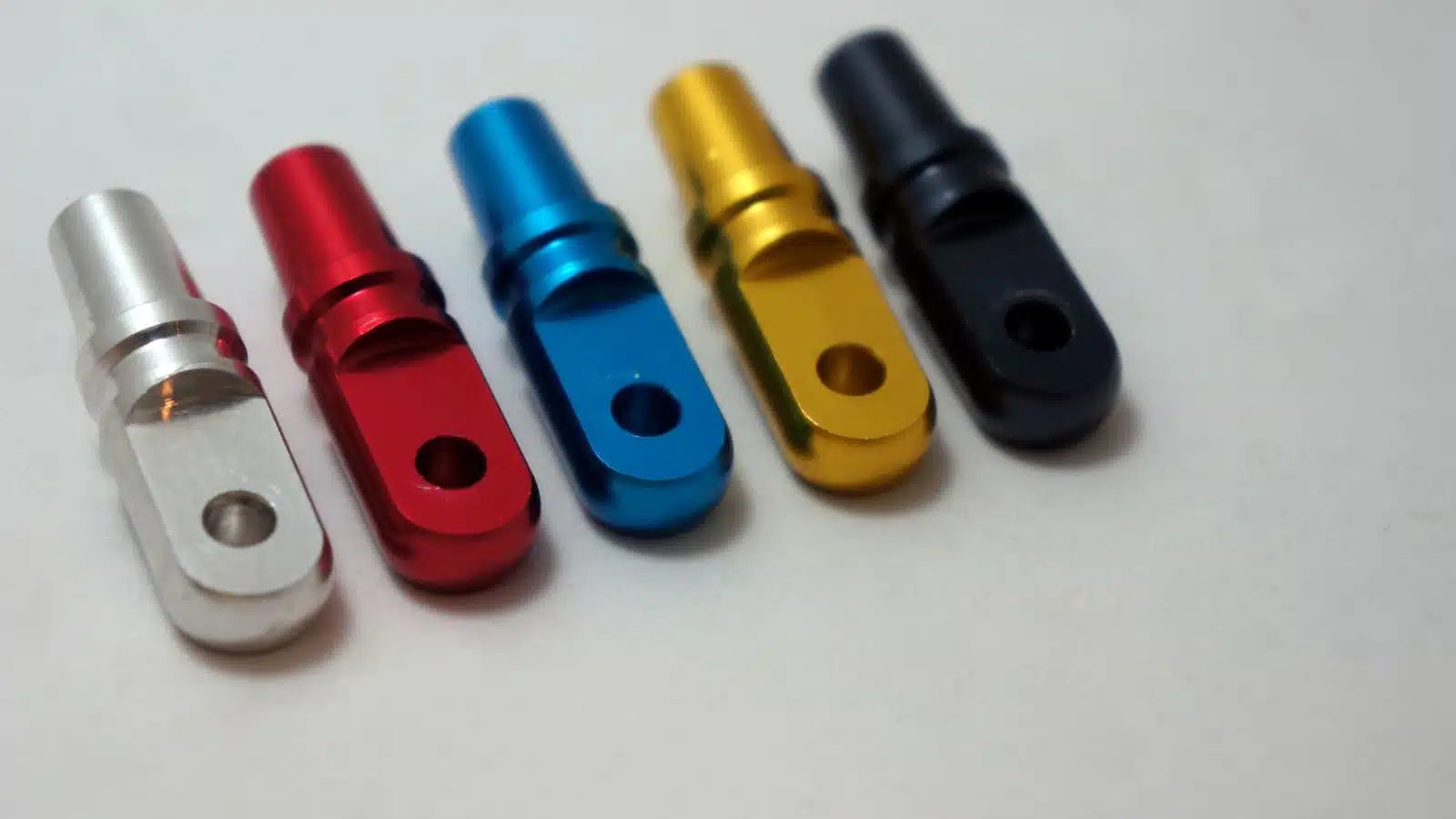
Choosing the right surface finish for CNC parts is important to ensure that the part meets the desired functional and aesthetic requirements. Some of the key factors to consider when selecting a CNC machining surface finish include functionality, material, aesthetics, cost, lead time, environmental impact, and part geometry.
By carefully evaluating these factors, the surface finish that perfectly matches the requirements of a specific project can be selected:
Functionality
The surface finish should be selected based on the functional requirements of the part. For example, parts that require high wear resistance or corrosion resistance may require a stronger surface finish like anodizing or electroplating. Similarly, parts that need to be aesthetically pleasing will need a different surface finish with multiple color and texture options.
Material
Certain CNC surface finishes are more suitable to specific CNC materials than others. For example, anodizing is typically usable on aluminum parts, while electroplating is suitable for conductive metal parts.
Aesthetics
The surface finish should be selected based on the desired appearance of the part. Different surface finishes can produce a range of visual effects, such as high gloss or matte finish.
Cost
Some finishes may be more expensive than others. For instance, powder coating will be a lot more expensive than regular paint. So, it’s important to balance all parameters to costs, function, and time to get the most optimum surface finish.
Lead time
Different finishing methods require varying amounts of time to complete. For example, if you need a product quickly, you may need to choose a finishing method that is quicker to complete, such as polishing. However, if you have more time and need a higher-quality finish, you may want to choose a method like anodizing, which can take longer but provide a more precise and polished finish.
Environmental impact
It is important to consider the environmental impact of the surface finish process and explore eco-friendly options whenever possible.
Part geometry
The geometry of the part can also affect the choice of surface finish. For example, parts with tight tolerances may require a different finish than parts with a more forgiving design.
Choose the Right Surface Finish with RapidDirect
Surface finishing is crucial for protecting materials, enhancing aesthetic appeal, and ensuring functionality. With little margin for error in this final production step, trust our professionals who have the expertise and tools to deliver exceptional results.
RapidDirect offers a variety of finishing options, tailored to your specific needs. Our streamlined process allows you to easily submit project details online and receive a prompt quote. We’re not just experts in surface finishing; our team’s extensive experience in various manufacturing domains assures top-quality parts with outstanding appearance. Partner with RapidDirect for a hassle-free experience and a commitment to excellence in every aspect of your CNC machining needs.
